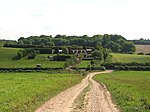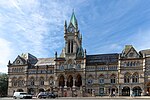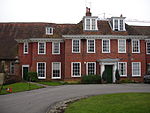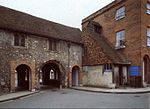Winchester Cathedral

The Cathedral Church of the Holy Trinity, Saint Peter, Saint Paul and Saint Swithun, commonly known as Winchester Cathedral, is the cathedral of the city of Winchester, England, and is among the largest of its kind in Northern Europe. The cathedral is the seat of the Bishop of Winchester and is the mother church for the ancient Diocese of Winchester. It is run by a dean and chapter, under the Dean of Winchester. The cathedral as it stands today was built from 1079 to 1532 and is dedicated to numerous saints, most notably Swithun of Winchester. It has a very long and very wide nave in the Perpendicular Gothic style, an Early English retrochoir, and Norman transepts and tower. With an overall length of 558 feet (170 m), it is the longest medieval cathedral in the world, and only surpassed by the more recent churches of St Peter's Basilica in Rome, Basilica of Our Lady of Peace in Yamoussoukro, Liverpool Anglican Cathedral, Cathedral of St John the Divine in New York City and the Basilica of Our Lady in Aparecida. With an area of 53,480 square feet (4,968 m2), it is also the sixth-largest cathedral by area in the UK, surpassed only by Liverpool, St Paul's, York, Westminster (RC) and Lincoln. A major tourist attraction, the cathedral attracted 365,000 visitors in 2019, an increase of 12,000 from 2018.
Excerpt from the Wikipedia article Winchester Cathedral (License: CC BY-SA 3.0, Authors, Images).Winchester Cathedral
Cathedral Close, Winchester The Close
Geographical coordinates (GPS) Address Website External links Nearby Places Show on map
Geographical coordinates (GPS)
| Latitude | Longitude |
|---|---|
| N 51.060555555556 ° | E -1.3130555555556 ° |
Address
Winchester Cathedral (Cathedral Church of the Holy Trinity, and of St Peter and St Paul and of St Swithun)
Cathedral Close
SO23 9JP Winchester, The Close
England, United Kingdom
Open on Google Maps











